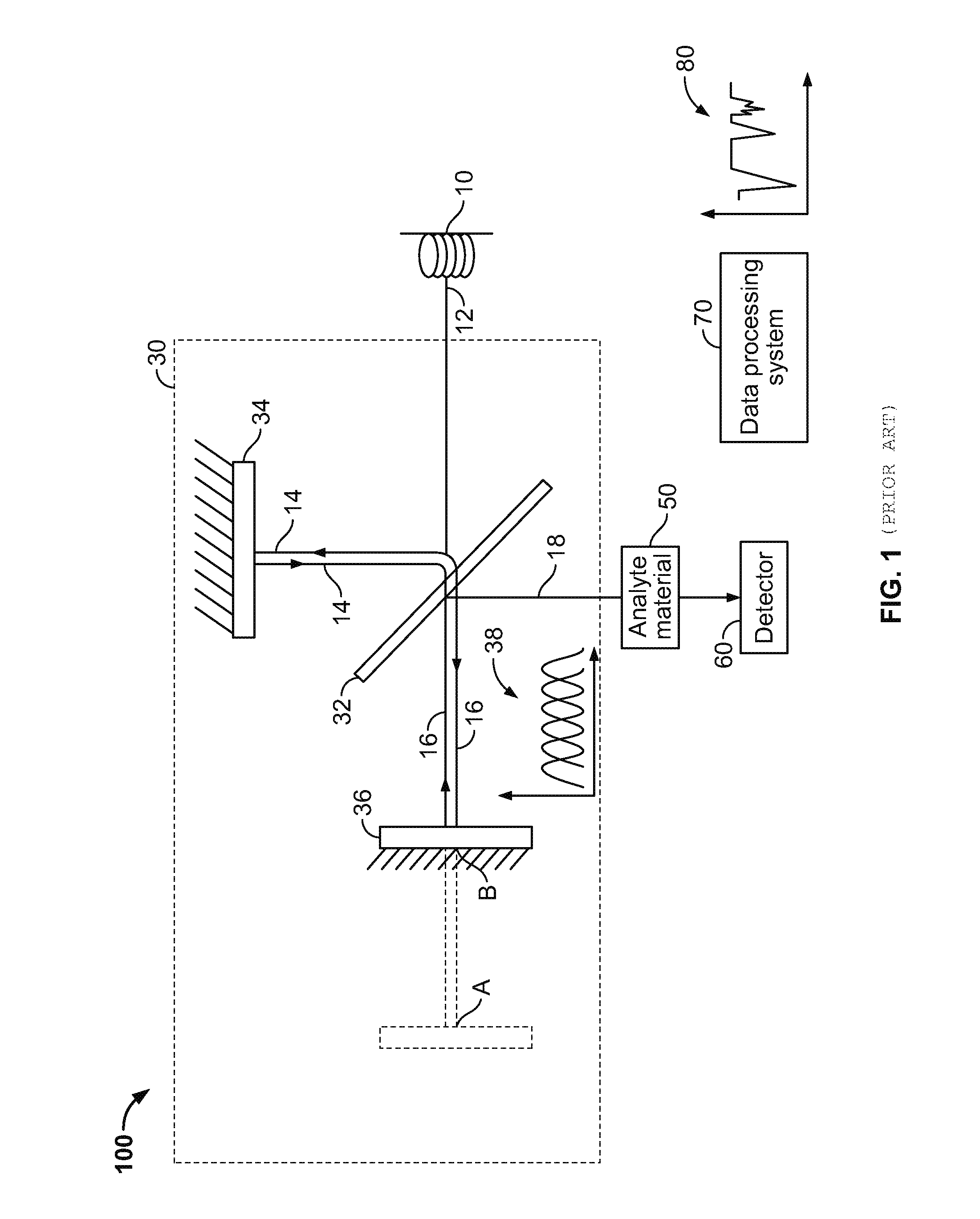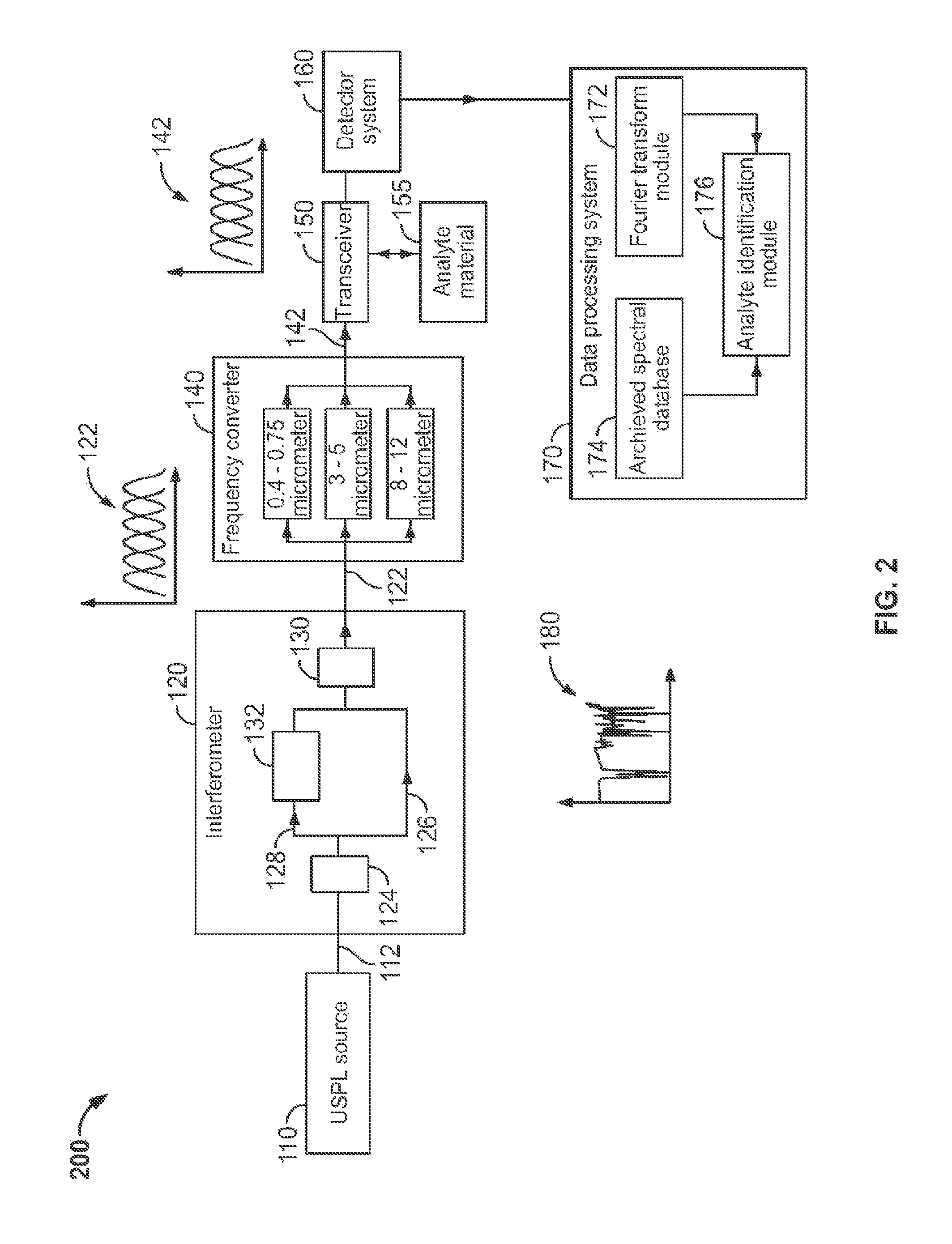Spectrometer for identifying analyte materials
a technology of analyte materials and spectrometers, applied in the field of spectrometers, can solve the problems of alternating constructive and destructive interference between beams, conventional ftir spectrometers, such as the spectrometer described above, and suffer from a number of limitations, and conventional ftir spectrometers are sensitive to vibration and thermal effects
- Summary
- Abstract
- Description
- Claims
- Application Information
AI Technical Summary
Benefits of technology
Problems solved by technology
Method used
Image
Examples
Embodiment Construction
[0032]The present invention will be described in detail with reference to the accompanying drawings. Throughout the present description, it should be understood that the term ‘spectrometer’ as mentioned herein refers to an instrument that analyzes radiation patterns of analyte materials. Further, herein the term ‘identifying’ the analyte material refers to detecting, characterizing, quantifying, or imaging the analyte material. Further, it should be understood that the ‘analyte material’ as mentioned herein refers to any chemical substance, or object that may be required to be detected, imaged, identified, and / or characterized by the spectrometer. For example, the analyte material may include hazardous airborne, waterborne, and / or surface-adhered biological and chemical species (including explosives residues), concealed or buried objects, or facilities suspected to contain chemical or biological species of interest.
[0033]FIG. 2 is a block diagram of a spectrometer 200 according to a...
PUM
 Login to View More
Login to View More Abstract
Description
Claims
Application Information
 Login to View More
Login to View More - R&D
- Intellectual Property
- Life Sciences
- Materials
- Tech Scout
- Unparalleled Data Quality
- Higher Quality Content
- 60% Fewer Hallucinations
Browse by: Latest US Patents, China's latest patents, Technical Efficacy Thesaurus, Application Domain, Technology Topic, Popular Technical Reports.
© 2025 PatSnap. All rights reserved.Legal|Privacy policy|Modern Slavery Act Transparency Statement|Sitemap|About US| Contact US: help@patsnap.com



